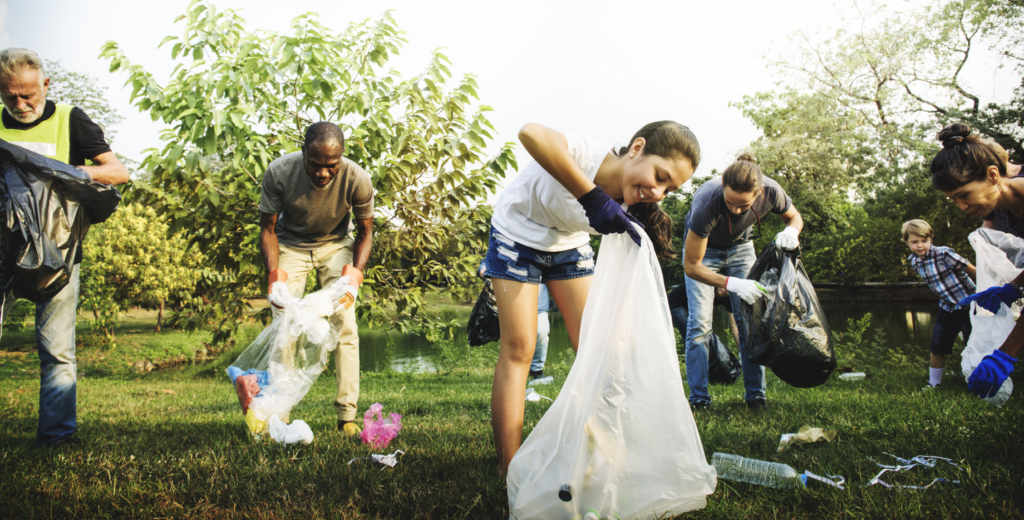The Environmental Benefits of Vertical Farming
Winners of the Junior Academy Innovation Challenge – Fall 2023 “Green Homes, Green Schools, Green Communities”
Sponsored by The New York Academy of Sciences
Published August 14, 2024
By Nicole Pope
Academy Education Contributor
Team members: Iga P. (Team Lead) (Poland), Eliska B. (Slovakia), Alfiya K. (Kazakhstan), Ivanna V. (Ukraine), Linda M. (Slovakia), Nouha O. (Tunisia)
Mentor: Adeola Akinsulure (Nigeria)

In Fall 2023, The New York Academy of Sciences invited high school students from around the world to select an environmental issue they encounter at school, at home, or within their community, and devise a creative solution to address it, as part of a Junior Academy Innovation Challenge.
Working in virtual teams through the platform Launchpad, over 800 students responded to the invitation and offered novel approaches to specific environmental issues they had identified.
The six members of the winning team, Destination: Green, honed their focus on urban farming, which can increase the resilience of city dwelling communities to the impacts of climate change and reduce excessive pressure on fragile land resources.
“The existing food system faces vulnerabilities,” says Nouha. “It is susceptible to weather and economic changes, leading to a rise in the number of people experiencing food shortages. Conventional farming practices cause environmental harm, polluting the natural resources and damaging ecosystems.”
Increasing Resilience Through Vertical Farming
Vertical farming enables individuals living in urban environments to cultivate nutritious fresh food, in spite of limited access to land. Having decided to focus on this practice as a way to improve the sustainability of food supplies, the team first conducted a survey to assess overall knowledge of this cultivation method and identify the obstacles that currently limit the growth of urban food production.
The results revealed poor awareness of farming opportunities in urban settings and highlighted the need for educational efforts: while 64% of respondents weren’t familiar with the concept of vertical farming, 95% of people surveyed expressed an interest and 92% said they would start a farm if they had the necessary information.
The team members used these results to craft their solution. To address the knowledge gap, the team designed an app that guides users through the launch and development of a vertical farm, providing educational resources to make urban farming more accessible.
“Each of us had different strengths; some of us were better with finding ideas for [our] project, some with completing specific tasks,” explains Linda. “My main contribution to the project was probably [the] creation of all the designs of an app in Canva. Apart from that, I wrote some of the milestone texts, participated in meetings, discussed what the app should look like, and found information about some specific topics.”
The app will feature easy-to-follow vertical farming techniques, with tutorials and tips to support aspiring urban farmers. Other features include an AI chatbot that provides assistance and recommendations, a progress tracker, a shopping page for supplies, and a discussion forum to promote community engagement.
Overcoming Unique Challenges
Eliška admits she initially had doubts about working as part of a team. But her misgivings evaporated rapidly when she started collaborating virtually with her fellow team members.
“Right after the first online meeting, we immediately decided when we would meet and planned our work,” she says. “Overall, I liked working with my team. We organized it very well and I never felt like I had to do everything by myself.”
To devise a comprehensive solution and complete their project on time, the team participants had to overcome some unique challenges. Alfiya joined her teammates online from Kazakhstan, across multiple time zones.
“Usually when we met, it was pretty late for me, around 10 or 11 pm, but I wanted to put my efforts into this project,” she says, expressing her pride at having contributed to the solution. “During this challenge, I took different tasks like creating a Google form to ask people about vertical farming, gathering information about microgreens, and much more.”
Destination: Green team members are delighted that their collective efforts have been recognized. The challenge provided an enriching learning experience for the participants, who developed new skills in the course of the project. As Team Lead, Iga guided discussions and shared relevant research, as well as contributing botanical expertise.
“Learning to lead and efficiently delegate tasks were pivotal skills I acquired, enhancing my ability to communicate and motivate the team effectively,” she says. “I realized that collective success is built on trust and collaboration.”
